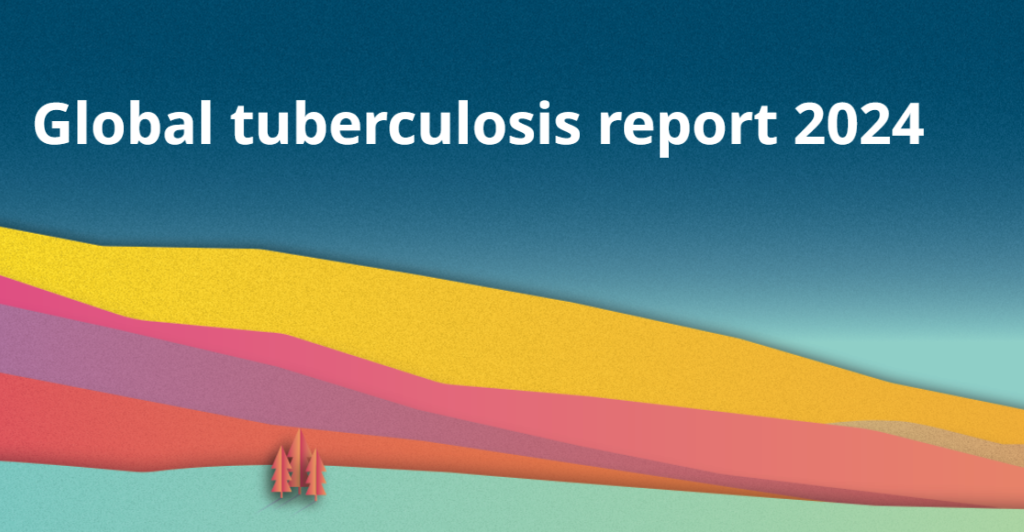Global Tuberculosis Epidemic 2024 Report
The “Global Tuberculosis Report 2024” by the World Health Organization (WHO) presents a comprehensive analysis of the tuberculosis (TB) epidemic, its burden, and ongoing global response efforts. Below is a summary of the report’s major points:
Key Findings and Global TB Burden
TB Mortality: In 2023, TB is believed to have re-emerged as the leading cause of death from an infectious agent, surpassing COVID-19. The disease caused around 1.25 million deaths, with the majority among HIV-negative individuals and a substantial number among those living with HIV.
TB Incidence: The number of people developing TB continues to rise slightly each year, reflecting both population growth and the residual effects of service disruptions during the COVID-19 pandemic. The estimate for 2023 stands at 10.8 million cases, with significant contributions from countries such as India, Indonesia, and China.
Drug-Resistant TB: Around 175,923 people were diagnosed with multidrug-resistant TB (MDR-TB) or rifampicin-resistant TB (RR-TB) in 2023, which is less than half of the estimated cases globally. The treatment success rate for drug-susceptible TB remains at a high level, though challenges persist for MDR/RR-TB.
Progress Toward WHO Targets
Despite improvements, the TB incidence and mortality reduction goals set by the WHO’s End TB Strategy are not on track:
Incidence Reduction: Since 2015, TB incidence has dropped by only 8.3% globally, with notable progress in the African and European regions.
Mortality Reduction: There has been a 23% reduction in TB-related deaths since 2015, short of the 2025 milestone of a 75% reduction.
Universal Health Coverage (UHC): Progress toward UHC is essential for addressing catastrophic costs faced by TB-affected households. Currently, 50% of affected households still experience catastrophic costs.
Gaps in Diagnosis and Treatment
The global gap between the estimated and notified TB cases has narrowed since the pandemic, indicating improved case detection. However, there are still significant shortfalls in reaching and treating all TB cases, especially drug-resistant forms.
Financial barriers continue to limit access to TB diagnosis and treatment. WHO emphasizes the need for increased social protections and resources to reduce the economic burden on affected households.
Prevention and Vaccine Development
TB prevention coverage among high-risk populations is progressing slowly, with only 21% of household contacts and 56% of people living with HIV receiving preventive treatment.
Vaccine development is a high priority, with six candidates currently in Phase III trials. WHO’s goal is to introduce an effective TB vaccine within five years.
Funding and Resource Allocation
There is a significant funding gap for TB services. The 2023 funding level of $5.7 billion falls short of the $22 billion target for 2027. Similarly, TB research funding, which stood at $1 billion in 2022, is well below the targeted $5 billion needed annually to advance innovations in diagnostics, treatments, and vaccines.
Strategic Priorities and Future Actions
The 2023 UN High-Level Meeting on TB reaffirmed commitments and set new targets to end the epidemic. Priority actions include:
Scaling up diagnostic and treatment services: The goal is to reach 90% treatment coverage by 2027.
Expanding preventive treatment: The target is 90% coverage among high-risk groups.
Ensuring 100% of newly diagnosed TB cases undergo rapid testing.
Developing effective vaccines: Accelerating vaccine research and rollout is essential to breaking the TB transmission and infection cycle.
Enhancing community and civil society engagement: Increasing legal and social support, alongside stigma reduction, is crucial for equitable TB care.
In conclusion, while there have been advancements in TB diagnosis, treatment, and funding, achieving the WHO’s ambitious TB elimination targets requires sustained and intensified global efforts. Addressing social determinants, reducing catastrophic health costs, increasing funding, and accelerating vaccine development remains critical to ending TB as a public health threat by 2030.
Pakistan’s position in tuberculosis(TB) disease
According to the “Global Tuberculosis Report 2024” Pakistan is among the high-burden countries for tuberculosis (TB), accounting for approximately 6.3% of global TB cases. The report highlights several critical challenges for Pakistan:
1. High Incidence and Underreporting: Pakistan ranks as one of the top contributors to the global TB burden, facing significant underreporting. Approximately 7.8% of the global gap between estimated and reported TB cases originates from Pakistan.
2. Multidrug-Resistant TB (MDR-TB): Pakistan is also among the countries with a large number of MDR-TB cases, requiring improvements in both drug resistance testing and treatment accessibility.
3. Impact of COVID-19 and Recovery: COVID-19 disrupted TB services. However, recent years have seen a recovery in TB case notifications, with Pakistan contributing notably to the global increase in TB notifications between 2021 and 2023.
4. Preventive Measures and Funding Needs: The report calls for further investment in Pakistan’s TB diagnostic, treatment, and prevention services, emphasizing that achieving WHO targets requires enhanced funding and resource allocation to prevent further spread and mortality from TB.
Overall, while progress has been made, Pakistan must address challenges in diagnostics, funding, and comprehensive reporting to reduce the TB burden effectively.



